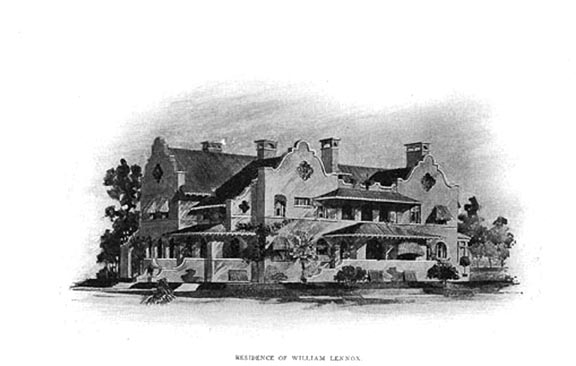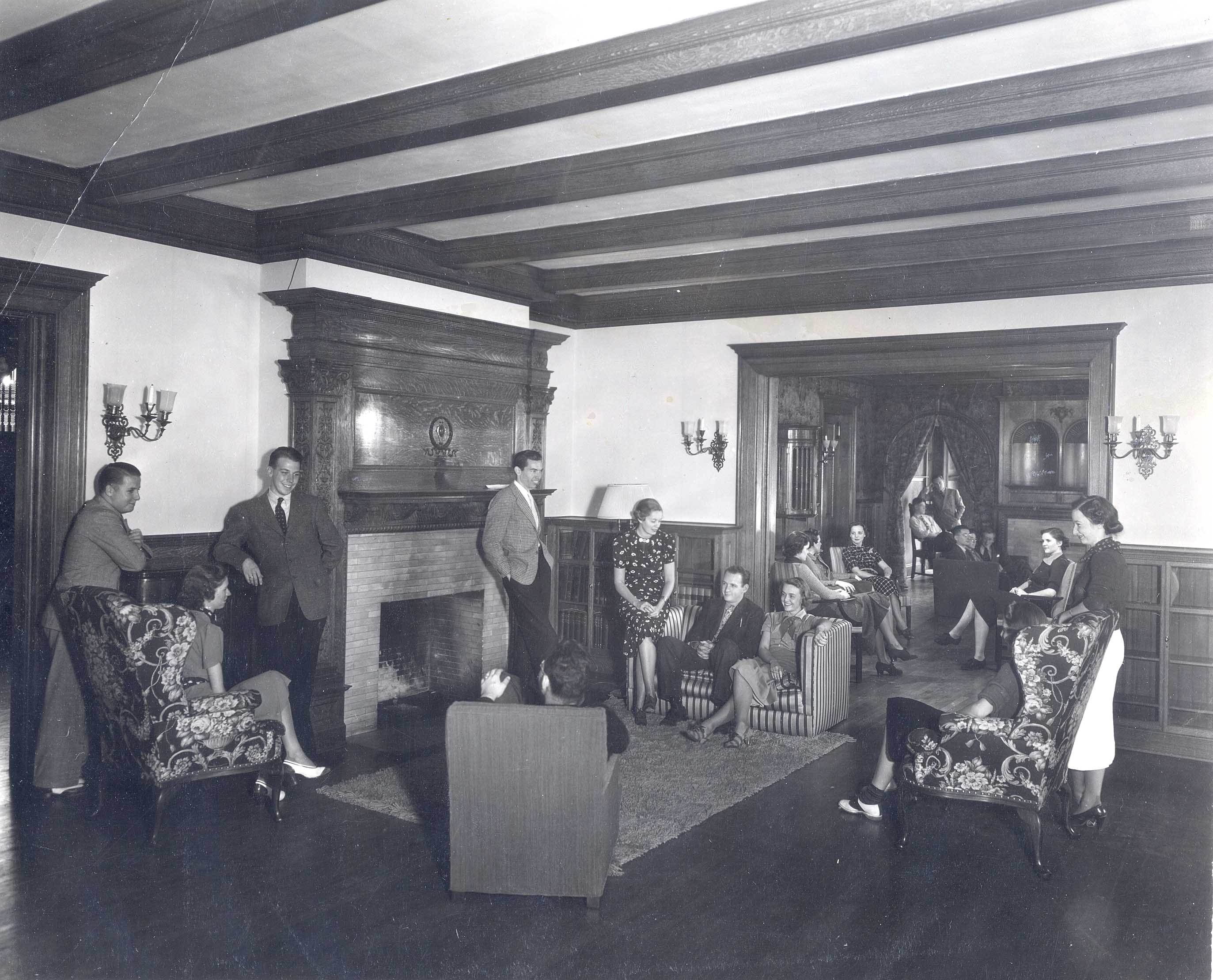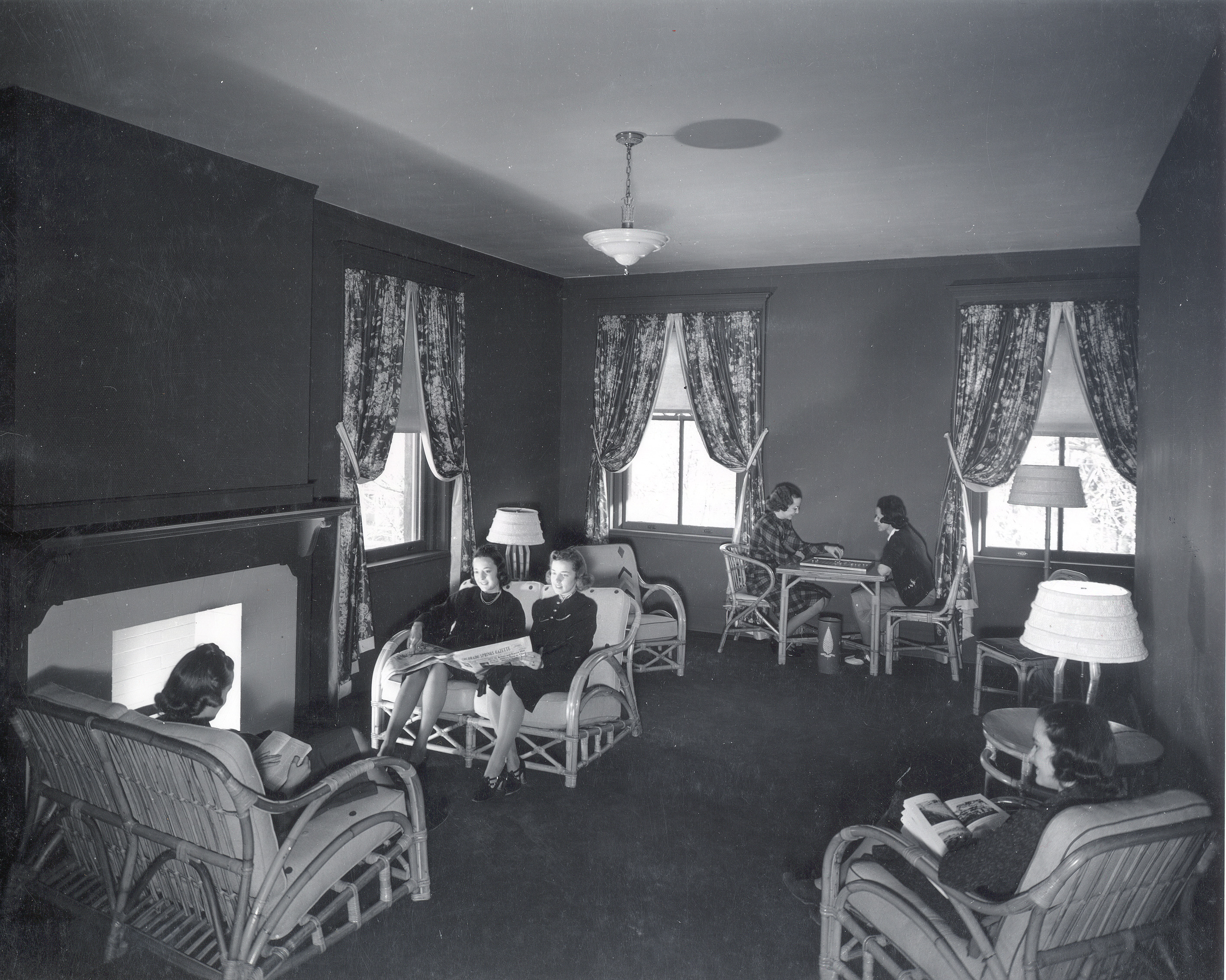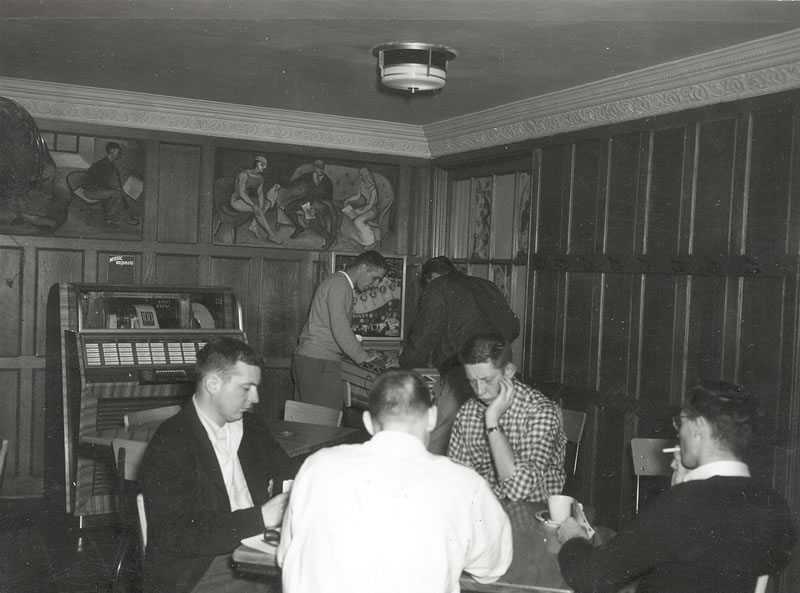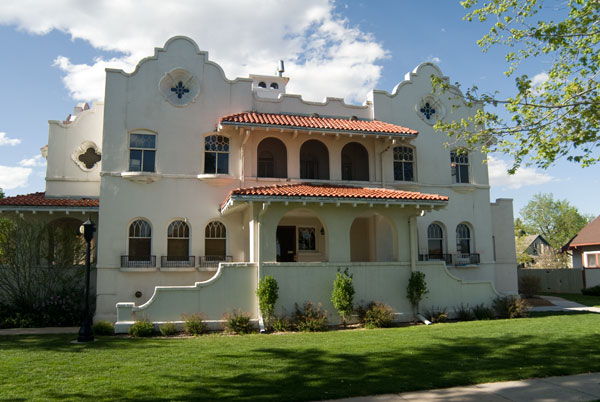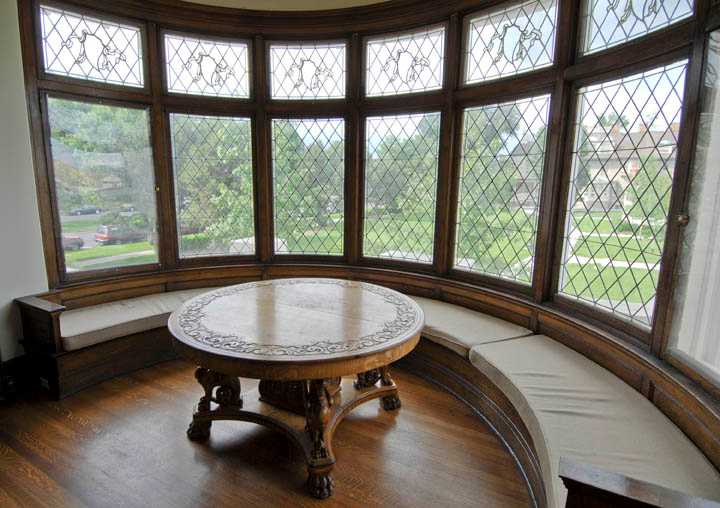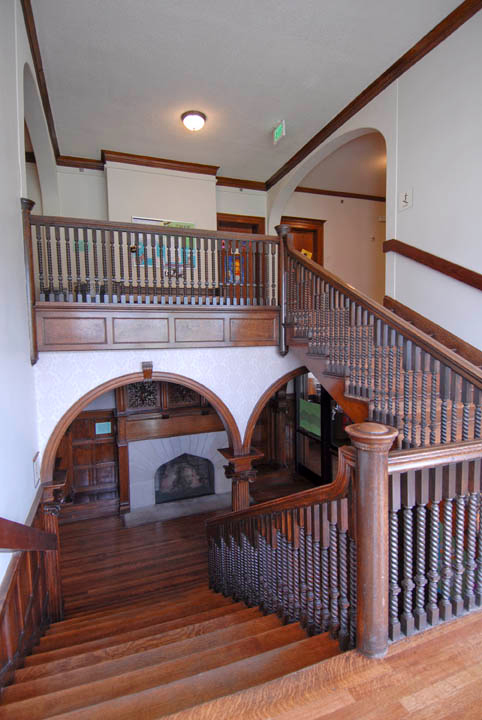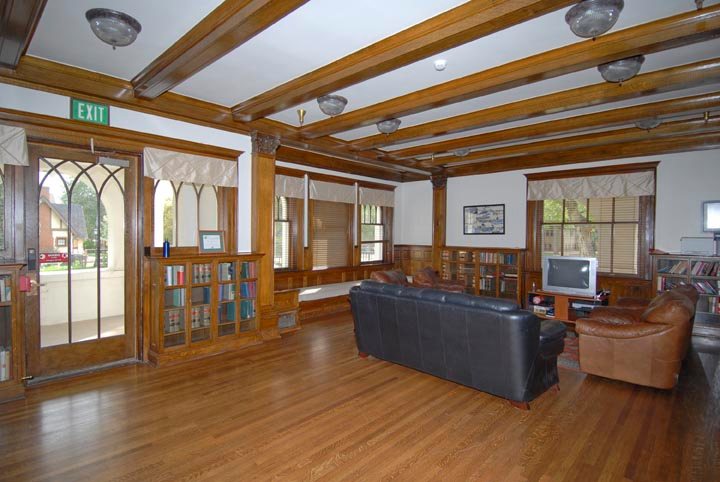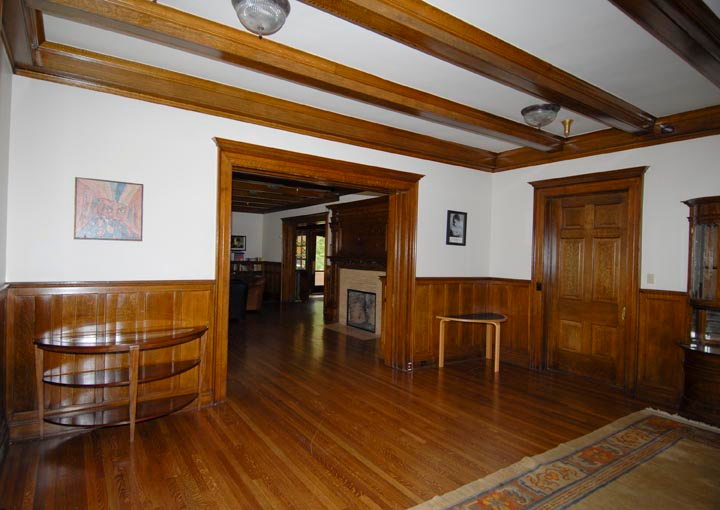Lennox House
Tour Stop: #11
Current and Historic Name: Lennox House
Address: 1001 N. Nevada Avenue
Year Completed: 1900
Architectural Style: Mission Revival
Architect: Frederick J. Sterner, Denver
Designation: National Register
Access: Lennox House is a residence and therefore is not open to the public.
Mining millionaire, businessman, and longtime Colorado College trustee William Lennox erected this elegant Mission Revival style house in 1900. The child of Scottish immigrants, Lennox was born in 1850 in Iowa, where he attended college. After his parents moved to the Colorado Springs vicinity in 1872, Lennox came west and spent several months prospecting and mining near Fairplay. He then started a feed and livery business in fledgling Colorado Springs. In 1874, Lennox became the agent for the Denver & Rio Grande Railroad's coal yard in Colorado Springs. He and a brother bought a coal and transfer business two years later, serving as agents for the railroad and later representing the Colorado Coal and Iron Company and the Colorado Fuel Company. After acquiring his brother's interest in the business, Lennox became the largest coal dealer in El Paso County. At the same time, he continued to invest in mountain mining properties, a pursuit that ultimately yielded tremendous rewards. In 1891, Lennox purchased Robert Womack's El Paso gold claim in the Cripple Creek district, and he became the majority shareholder in the Gold King Mining Company and the Strong Mine.
While Cripple Creek provided Lennox with a fortune, he also pursued other diverse interests, including serving as president of the Exchange National Bank in Colorado Springs and maintaining large cattle ranches in Texas. Described as "one of the conspicuous successes in the Colorado Springs business community" in a 1900 Gazette article, Lennox vigorously promoted the city and was a member of the Chamber of Commerce and the board of the Myron Stratton Home. His work for Colorado College included participation as a trustee from 1901 to his death in 1936.
Lennox used some of his mining wealth to build this residence across from the developing college campus. Constructed for the then-significant sum of $50,000, the house was described by the Colorado Springs Gazette as "magnificent." The newspaper observed, "People who have seen the plans and are able to speak with authority on such things do not hesitate to say that there is no residence in Colorado Springs at the present time either completed or in course of construction that will be the equal of Mr. Lennox's home."
Denver architect Frederick J. Sterner designed the house for Lennox. Sterner, who worked in Colorado for two decades, came to the United States from England at the age of 16 and studied architecture in New York. By 1882, he was a draftsman in the Denver office of Frank E. Edbrooke & Company, the most illustrious architectural firm of the late 19th century in Colorado. Two years later he established a successful partnership with Ernest Phillip Varian that designed the Denver Athletic Club (1889) and a number of houses for the wealthy.Following dissolution of that firm, Sterner headed his own office and branched out to produce buildings in other parts of the state. Lennox House is the earliest documented of Sterner's designs in Colorado Springs, where he attracted a number of commissions from the city's elite. Among his most important projects were William Jackson Palmer's Second Antlers Hotel and the redesign of his residence, Glen Eyrie, both in Colorado Springs in 1901. The architect also completed plans for a number of buildings for the Colorado Fuel & Iron Company, including its 1901 Mission Revival style Steel Works Office in Pueblo. In 1908, Sterner moved to New York City, where he established a prosperous architectural practice and shared an office with his sister, Maude, an interior designer. In 1924, he retired and returned to England.
Colorado College received this house from Lennox's estate in 1936. A number of men who amassed wealth in Cripple Creek provided gifts of property, funds for the construction of buildings, and monetary support for the college's programs. Many, like Lennox, helped determine the future direction of the college by serving on influential committees, such as the board of trustees. Spencer Penrose, Charles L. Tutt, Sr., Eugene P. Shove, Claude Boettcher, James J. Hagerman, and Verner Z. Reed were representative of the college benefactors who made mining fortunes. Although little new construction took place on campus during the 1930s, the college expanded its facilities through the donation and purchase of several large homes like Lennox House adjacent to the campus. These developments were later described as "The Growth That Nobody Saw."
After receiving Lennox House, the college engaged local architect Edward L. Bunts and spent $40,000 remodeling and renovating the residence for use as a student center. The new facility opened in September 1937 with a tea for students and faculty, followed by a dance with orchestral music. Before acquisition of the house, booths at Murray's Drugs in the Plaza Hotel functioned as an informal center of student social life. Lennox House fulfilled the need for a central location for students to gather outside their dormitories and provided a college setting for meals, recreation, and social gatherings.
Henry E. Mathias, who headed the Geology Department for many years, served as the center's director. Mrs. J.R. McLenegan, described as having "experience in social work of various types," acted as the hostess. She lived in Lennox and was on duty day and night, seven days a week. The facilities included a basement grill, which operated from 7:15 a.m. until 10:15 p.m., extending its hours until 1:15 a.m. on Friday and Saturday nights. The main floor contained a spacious lounge and reading room, also used for meetings, teas, and informal dances, as well as a private dining room. The upper floors held offices for the student government and the school newspaper, and a game room equipped with a billiard table. The Associated Women Students also occupied Lennox House during the late 1930s. In 1941, the college bookstore opened on the second floor. Lennox House functioned as the student center for Colorado College until 1959, when the newly-completed Rastall Center opened.
After another remodeling, Beta Theta Pi fraternity occupied the house for 30 years. During summer terms, the building was the site of an intensive foreign language program, German House. In addition to regular classroom study, students of German House attended laboratory sessions for practicing pronunciation, song sessions, films, lectures, and discussions. In the fall of 1989, the college converted the building to a coed dormitory and revived the "Lennox House" name. Lennox House, which was listed in the National Register in 1999 for its historical and architectural significance, now serves as a multicultural-themed residence also known as Glass House.



